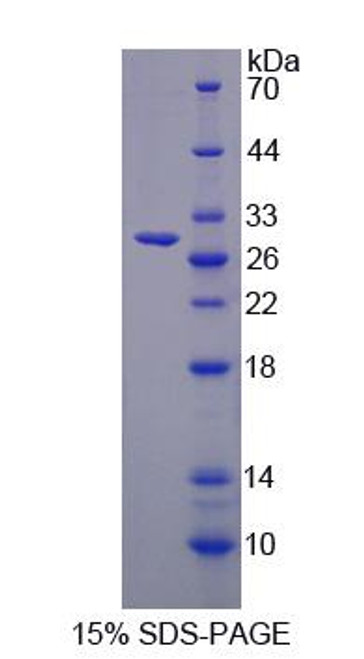Product Description
Follistatin is an autocrine acting protein that is expressed by many tissues, but at noteably higher levels in the ovary and skin. Follistatin functions to negatively regulate the signaling of a wide variety of TGF-beta family members (activin, BMPs, myostatin, GDF-11 and TGF-beta 1). Mechanistically, follistatin works as an antagonist by complexing with TGF-beta family members to prevent them from interacting with their signaling receptors. Recombinant mouse follistatin is a nonglycosylated protein, containing 289 amino acids, with a molecular weight of 31.6 kDa.
Biovision | 4718 | Follistatin mouse recombinant DataSheet
Biomolecule/Target: N/A
Synonyms: FS, activin-binding protein, FSH-suppressing protein (FSP)
Alternates names: NOG
Taglines: An autocrine glycoprotein involved in binding and bioneutralization of members of the TGF- superfamily
NCBI Gene ID #: 9241
NCBI Gene Symbol: NOG
Gene Source: Mouse
Accession #: Q13253
Recombinant: Yes
Source: E. coli
Purity by SDS-PAGEs: 95%
Assay: SDS-PAGE
Purity: 90%
Assay #2: HPLC
Endotoxin Level: <0.1 EU/g purified protein
Activity (Specifications/test method): N/A
Biological activity: Determined by its ability to inhibit 5 ng/ml of BMP-4-induced alkaline phosphatase production by ATDC chondrogenic cells. The expected ED for the effect is 0.05-0.08 µg/ml of Noggin
Results: 0.3 ug/mL
Binding Capacity: N/A
Unit Definition: N/A
Molecular Weight: 23.1 kDa
Concentration: N/A
Appearance: Lyophilized protein
Physical form description: Recombinant mouse Follistatin is lyophilized from 10 mM Na2PO4 + 50 mM NaCl, pH 7.5.
Reconstitution Instructions: Reconstitute in HO to a concentration of 0.1 to 1.0 mg/ml. Note: Due to solubility reasons the protein should be kept at low pH. This solution can then be diluted into other aqueous buffers
Amino acid sequence: N/A
 Euro
Euro
 USD
USD
 British Pound
British Pound
 NULL
NULL








